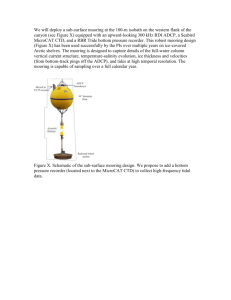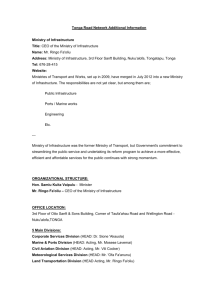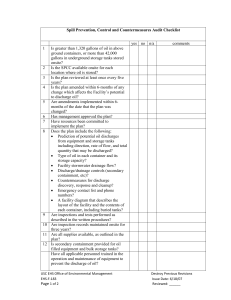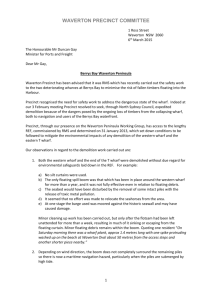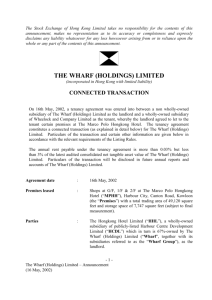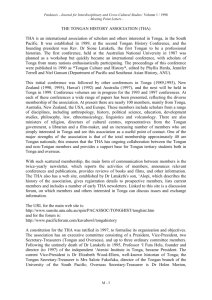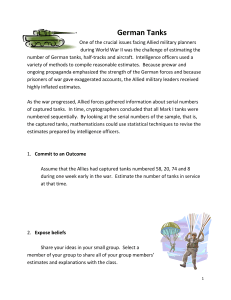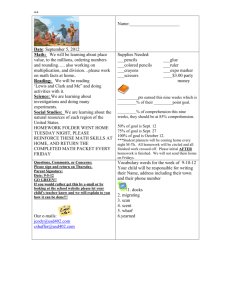Tonga Fuel Additional Details
advertisement
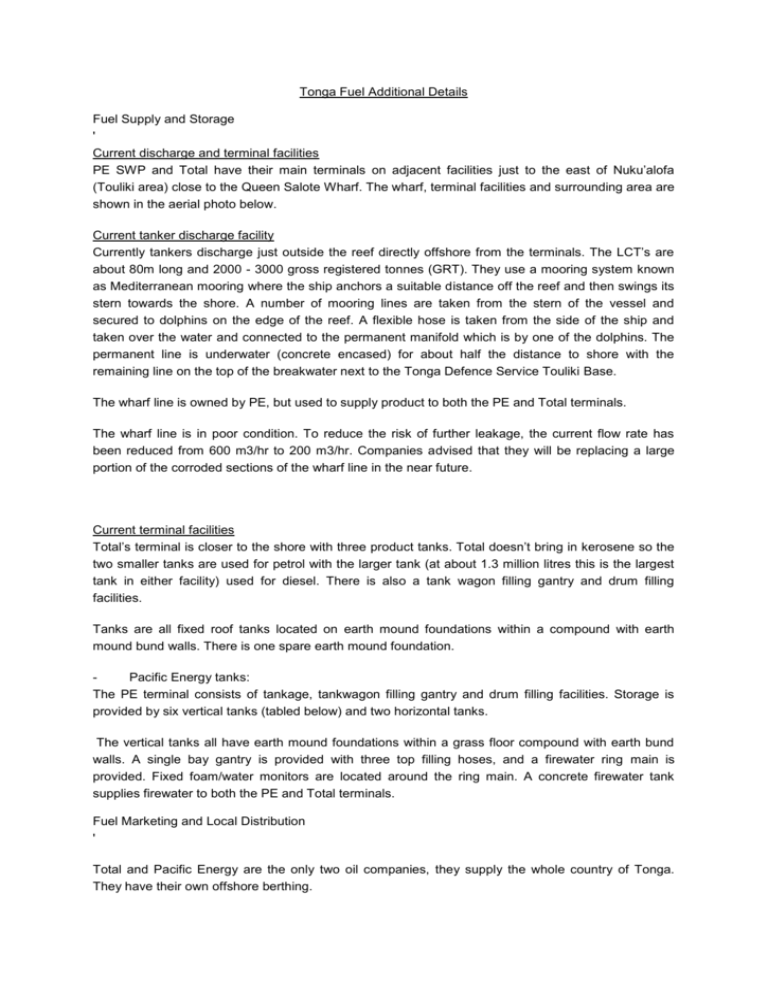
Tonga Fuel Additional Details Fuel Supply and Storage ' Current discharge and terminal facilities PE SWP and Total have their main terminals on adjacent facilities just to the east of Nuku’alofa (Touliki area) close to the Queen Salote Wharf. The wharf, terminal facilities and surrounding area are shown in the aerial photo below. Current tanker discharge facility Currently tankers discharge just outside the reef directly offshore from the terminals. The LCT’s are about 80m long and 2000 - 3000 gross registered tonnes (GRT). They use a mooring system known as Mediterranean mooring where the ship anchors a suitable distance off the reef and then swings its stern towards the shore. A number of mooring lines are taken from the stern of the vessel and secured to dolphins on the edge of the reef. A flexible hose is taken from the side of the ship and taken over the water and connected to the permanent manifold which is by one of the dolphins. The permanent line is underwater (concrete encased) for about half the distance to shore with the remaining line on the top of the breakwater next to the Tonga Defence Service Touliki Base. The wharf line is owned by PE, but used to supply product to both the PE and Total terminals. The wharf line is in poor condition. To reduce the risk of further leakage, the current flow rate has been reduced from 600 m3/hr to 200 m3/hr. Companies advised that they will be replacing a large portion of the corroded sections of the wharf line in the near future. Current terminal facilities Total’s terminal is closer to the shore with three product tanks. Total doesn’t bring in kerosene so the two smaller tanks are used for petrol with the larger tank (at about 1.3 million litres this is the largest tank in either facility) used for diesel. There is also a tank wagon filling gantry and drum filling facilities. Tanks are all fixed roof tanks located on earth mound foundations within a compound with earth mound bund walls. There is one spare earth mound foundation. Pacific Energy tanks: The PE terminal consists of tankage, tankwagon filling gantry and drum filling facilities. Storage is provided by six vertical tanks (tabled below) and two horizontal tanks. The vertical tanks all have earth mound foundations within a grass floor compound with earth bund walls. A single bay gantry is provided with three top filling hoses, and a firewater ring main is provided. Fixed foam/water monitors are located around the ring main. A concrete firewater tank supplies firewater to both the PE and Total terminals. Fuel Marketing and Local Distribution ' Total and Pacific Energy are the only two oil companies, they supply the whole country of Tonga. They have their own offshore berthing. Total and Pacific Energy have terminal facilities 0.5 n.m. east of Queen Salote Wharf. Currently, tankers discharge just outside the reef directly offshore from the terminals using a Mediterranean mooring system, with vessels stern towards shore and aft mooring lines secured to dolphins at the edge of the reef. Accommodate local coastal tankers, typically LOA 80m., max draft 5.0m., 3.000gt. Cargo transfer is by flexible hose between a permanent manifold by one of the dolphins and vessels manifold. Handles products at a rate of 200 cu.m. / hr. The port handles approx. 40-50 million liters of petroleum products per year. Pacific Energy and Total have their main terminals on adjacent facilities just to the east of Nuku’alofa (Touliki area) close to the Queen Salote Wharf. The wharf, terminal facilities and surrounding area are shown in the aerial photo below. Fuel Supply There are two major companies marketing in Tonga, Pacific Energy SWP Limited (PE SWP) and Total. Since early 2009 a local Tongan company (Vatu) has been supplying the Ha’apai group of islands using their own LCT. Fuel Demand Does local supply (domestic refinery production and imports combined) meet the needs of the country, especially for aviation and ground fuels? Yes The total Tongan market is 45-50 million litres per annum. The volume has varied over the past few years with no consistent trend, although volumes are down a little in the past couple of years (from 2007) which is likely to be related to the higher prices. The approximate split of product demand between the various island groups (based on delivery location rather than demand) is as follows: Delivery Point Approximate volume (mln litres) Proportion Tongatapu 42.5 87% Vava’u 4.5 9% Ha’apai[1] 1.0 2% Eua 0.9 2% The largest single consumer of petroleum fuel is Tonga Power which uses diesel for electricity generation. As a result diesel is the most significant product supplied to the market. Jet fuel/kerosene is only supplied to Tongatapu. The typical splits between grades are as follows (total Tongan demand): Product Approximate volume (mln litres) Proportion Petrol 13.1 27% Jet/Kerosene 5.3/0.2 11% Diesel (non –power) 16.1 33% Diesel (power) 14.2 29% Total 48.9 [1] Estimated – volume supplied through Nuku’alofa in the past
